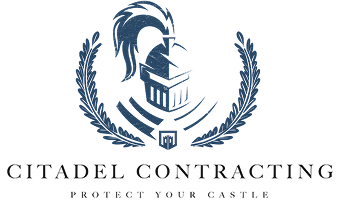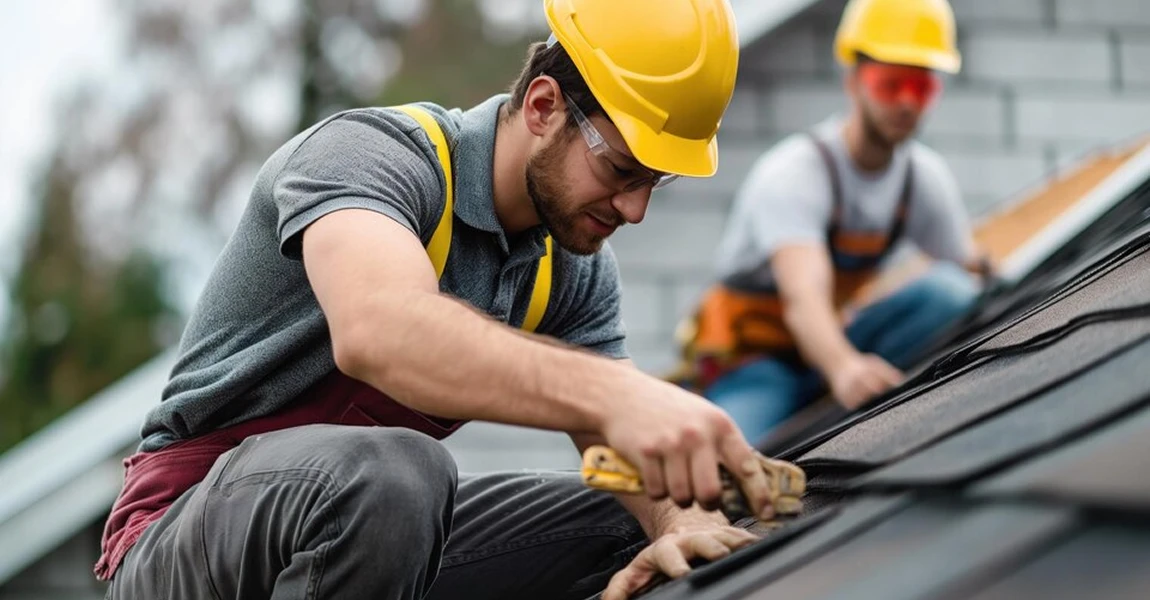A damaged roof can be a homeowner’s worst nightmare, especially after a storm or sudden accident. Whether it’s a fallen tree, missing shingles, or a severe leak, knowing what to do before the professionals arrive can prevent further damage and keep your home safe.
If you live in North Carolina, where storms, high winds, and heavy rains are common, it’s important to be prepared for unexpected roof emergencies. This guide will walk you through emergency roof repair tips so you can take immediate action while waiting for professional help.
Prioritize Safety First
Before inspecting any damage, make sure you and your family are safe. A damaged roof can create hazardous conditions, including loose debris, slippery surfaces, and exposed electrical wiring.
What to Do:
- Stay indoors if conditions are still dangerous. If your roof was damaged during a storm, wait until the weather clears before inspecting the damage.
- Avoid climbing onto the roof. Even if the damage looks minor, weakened structures can collapse or cause slips and falls.
- Turn off the electricity if there’s a leak. Water from a damaged roof can seep into ceilings and walls, creating a risk of electrical fires.
Local Insight:
In areas like Charlotte, Raleigh, and Wilmington, where severe thunderstorms and hurricanes are frequent, many homeowners experience roof damage from high winds and falling branches. Always wait for calm conditions before assessing your roof.
Identify the Extent of the Damage
Once it’s safe, inspect the damage from inside your home and from the ground. This will help you communicate the issue clearly when you contact a professional roofer.
Signs of Emergency Roof Damage:
- Visible leaks or water dripping from the ceiling
- Missing or torn shingles after strong winds
- Large branches or debris on the roof
- Sagging or bowing areas on the roofline
- Holes or punctures caused by hail or falling objects
If water is coming through the ceiling, place buckets or towels underneath to prevent damage to your floors and furniture.
Local Insight:
After hurricanes and heavy storms in Fayetteville and Greensboro, it’s common to see missing shingles and roof leaks. If you spot damage, take clear photos for insurance purposes.
Temporary Fixes to Minimize Damage
Temporary fixes can help prevent further issues while waiting for professional emergency roof repair services.
How to Make Quick Repairs:
- Use a tarp to cover damaged areas. Secure the tarp with nails or heavy objects to prevent water from entering your home.
- Apply roofing tape or sealant for minor leaks. These can provide a short-term solution until a professional arrives.
- Clear clogged gutters. Blocked gutters can cause water to back up and leak into your home.
- Move valuables away from leaks. If water is entering through the ceiling, protect furniture and electronics from water damage.
If you’re comfortable doing so, a tarp can be one of the most effective temporary solutions for stopping leaks. However, only attempt this if it’s safe—never climb onto a wet or unstable roof.
Local Insight:
In coastal areas like Wilmington, where hurricanes bring heavy rain, a tarp can help prevent interior water damage until a roofing professional arrives.
Contact a Professional Roofer Immediately
Emergency roof repairs require expert attention. The sooner you contact a professional, the faster you can prevent costly long-term damage.
What to Do When Calling a Roofer:
Describe the damage in detail. Let them know if you see missing shingles, water leaks, or structural issues.
Provide photos if possible. Sending images can help them assess the situation before arriving.
Ask about emergency services. Some roofing companies offer same-day or next-day emergency repairs for urgent situations.
Local Insight:
North Carolina is known for storm-related roof damage, and roofing professionals in the state are trained to handle emergencies quickly. In cities like Durham and Chapel Hill, many homeowners rely on emergency roofing services after hurricanes and heavy winds.
Check Your Home Insurance Policy
If your roof damage was caused by a storm, tree fall, or other unexpected event, your homeowner’s insurance may cover some or all of the repair costs.
Steps to Take for Insurance Claims:
- Review your policy to see if storm damage is covered.
- Take photos and document the damage before making temporary fixes.
- Contact your insurance company as soon as possible to file a claim.
- Request a professional inspection from a licensed roofer to assess the full extent of the damage.
Some policies have specific storm damage clauses, so it’s best to review your coverage annually—especially before hurricane season.
Local Insight:
Homeowners in North Carolina’s hurricane-prone regions often update their policies before storm season to ensure roof damage coverage is included.
Prevent Future Roof Damage
While not all roof damage can be prevented, regular maintenance can help you reduce the risk of future emergencies.
Preventative Measures:
- Schedule regular roof inspections. Have a professional check your roof at least once a year.
- Trim trees near your home. Overhanging branches can break off and cause severe roof damage.
- Check for loose or missing shingles. Address minor problems early before they become costly repairs.
- Ensure your gutters are clear. Clogged gutters can lead to water pooling on your roof, increasing the risk of leaks.
Local Insight:
In North Carolina, many homeowners schedule spring and fall roof inspections to prepare for summer storms and winter weather.
Final Thoughts: Be Prepared for Roof Emergencies
When disaster strikes, knowing what to do before the professionals arrive can make a big difference. By following these emergency roof repair tips, you can protect your home from further damage while waiting for expert help.
Key Takeaways:
- Safety first: Never put yourself at risk when checking for roof damage.
- Assess the damage: Look for leaks, missing shingles, and structural issues.
- Use temporary fixes: A tarp or sealant can help prevent immediate leaks.
- Call a professional roofer ASAP: Fast action can minimize costly repairs.
- Check your insurance policy: Storm-related damage may be covered.
- Prevent future damage: Routine maintenance can extend your roof’s lifespan.
If your roof has been damaged, don’t wait—contact a trusted roofing professional today for fast, reliable emergency repairs.
Need Emergency Roof Repair?
For fast and professional emergency roof repair services in North Carolina, contact Citadel Contracting today. Our expert team is ready to help you protect your home and prevent further damage.










